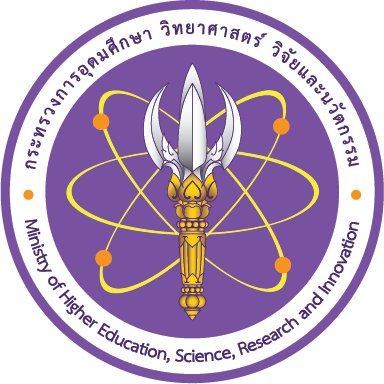BIOTEC-NSTDA recently announced the launch of two projects aiming to advance economic and sustainable development in the Lancang-Mekong sub-region. One project aims to improve capacity of players in the cassava value chain, whereas the other employs omics technology to monitor the ecological health of the Lancang-Mekong river.
The Lancang-Mekong Cooperation (LMC) is a sub-regional cooperation mechanism serving the common needs of the six countries - Cambodia, Laos, Myanmar, Thailand, Vietnam and China -along the Mekong River, the Chinese stretch of which is called the Lancang River. The cooperation is based on three pillars -- political and security issues, economic and sustainable development, and cultural and people-to-people exchanges.
To improve capacity of players in the cassava value chain, BIOTEC-NSTDA will be implementing a train-the-trainer program to transfer technologies and best practices in cassava cultivation and green manufacturing to minimize waste and improve production efficiency to countries in the LMC. The training program covers technologies and best practices for the upstream, midstream and downstream of cassava industry. The upstream segment deals with cassava production, and the training will involve agricultural technology related to cultivation, ranging from varietal selection to disease management and good agricultural practices. Technology supporting resource-use efficient process will be introduced to the midstream segment; whereas technologies for biogas and ethanol production will be applied to the downstream segment to produce energy and product from cassava industrial waste - wastewater and cassava pulp. This project is led by Dr. Warinthorn Songkasiri and Dr. Kanchana Saengchan.

From left to right: Dr. Warinthorn Songkasiri, Dr. Kanchana Saengchan and Dr. Supawadee Ingsriswang
According to the project leader Dr. Supawadee Ingsriswang, the MekongDNA project will employ metagenomics and DNA barcoding methods to assess the diversity and abundance of microbiome present in water samples from three main areas of the Mekong-Lancang River Basin: the upper course of a river in China, the middle part of the river that flows through Thailand and the lower section in Vietnam where it flows into the South China Sea. This microbial index represents ecological health of the Mekong-Lancang river and will be useful for policy design, planning and management of water resources.
Both projects are supported by the Lancang-Mekong Cooperation Special Fund at 13 million THB each.
Note: Information provided by International Cooperation and Public Relations Division, BIOTEC.








